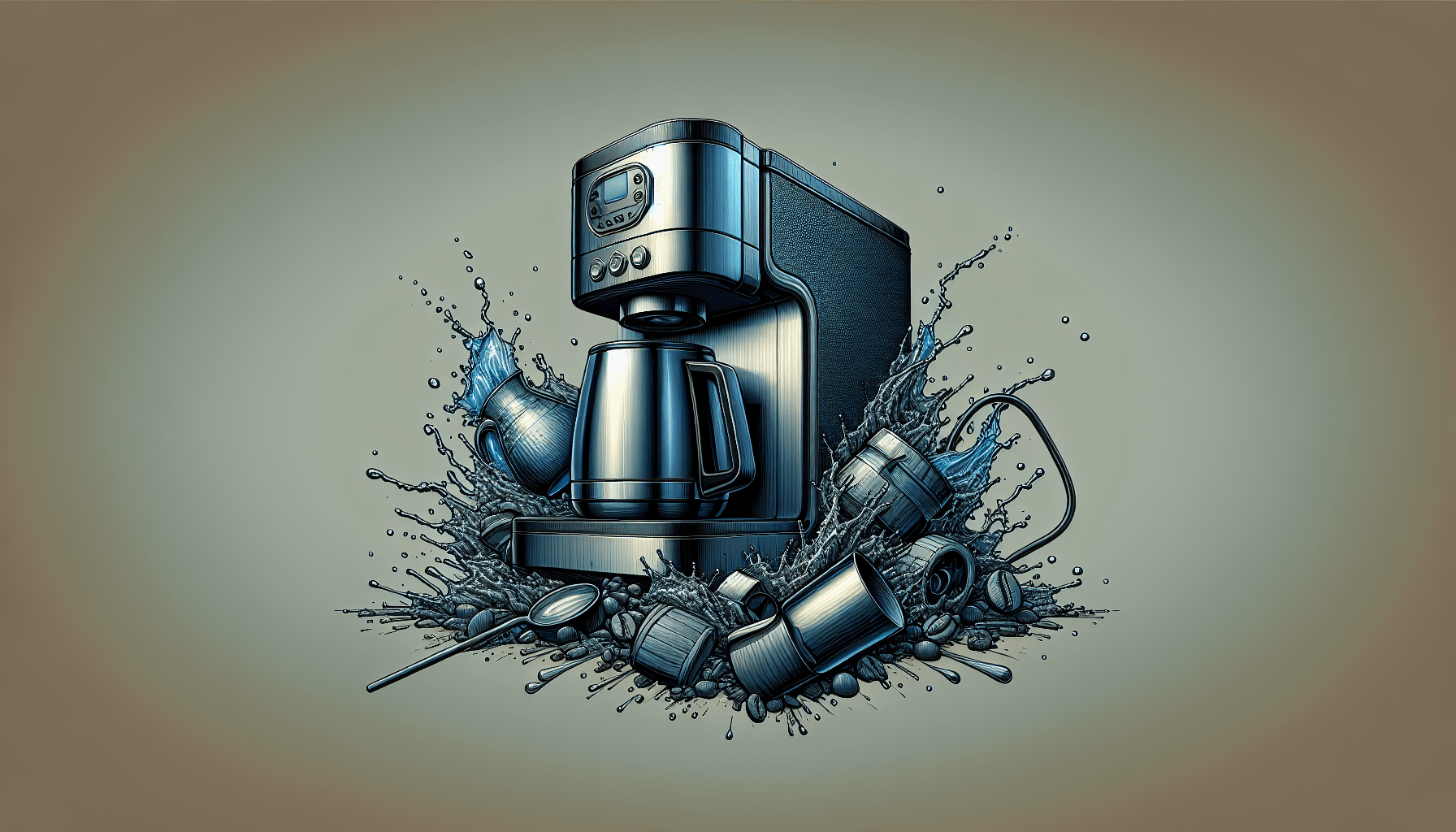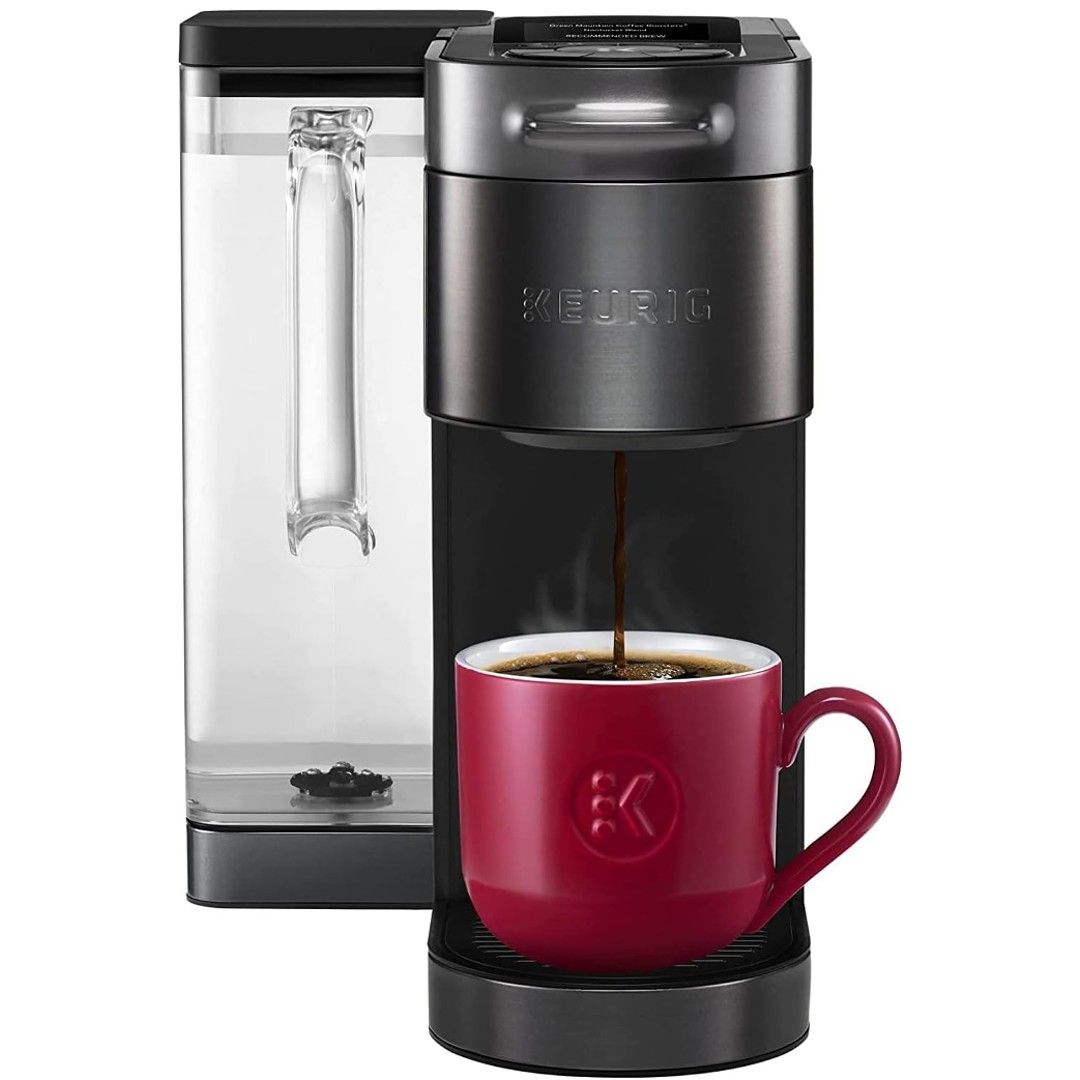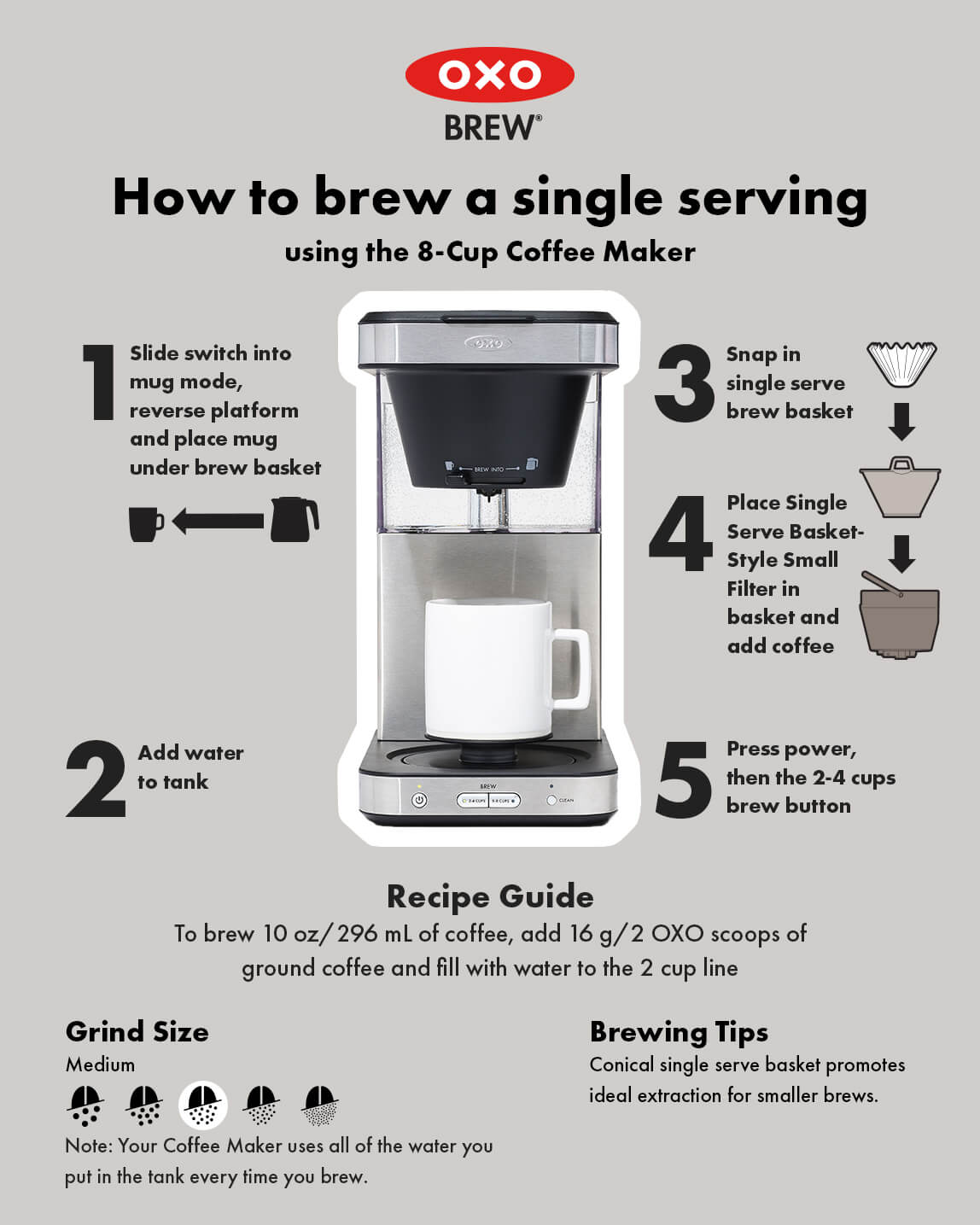Whether you’re a coffee aficionado or just someone who needs their daily caffeine fix, single-serve coffee makers have become a popular choice for brewing the perfect cup of joe at home. But have you ever wondered just how durable these machines really are? In this article, we’ll take a closer look at the durability of single-serve coffee makers, exploring their construction, materials, and overall performance to help you determine if they can withstand the test of time. So, grab your favorite mug and join us as we uncover the truth about the durability of single-serve coffee makers!
Design and Construction
When it comes to single-serve coffee makers, the design and construction play a significant role in determining their overall durability. These machines are often compact and sleek, making them an attractive addition to any kitchen countertop. The materials used in their construction vary, but the most common ones include stainless steel, plastic, and glass.
Materials Used
Single-serve coffee makers are typically made from a combination of materials to ensure both durability and functionality. Stainless steel is often used for the housing and internal components, providing strength and resistance to corrosion. Plastic is commonly used for the water reservoir and other exterior parts, as it is lightweight and easily molded into various shapes. Glass components, such as the coffee carafe or mugs, are also prevalent in some models.
Build Quality
The build quality of a single-serve coffee maker can significantly impact its durability. The seams and joints should be well-constructed and tight to prevent any leakage or damage. You should also pay attention to the quality of the buttons, knobs, and other control features. Sturdy and well-designed construction not only extends the lifespan of the machine but also enhances the overall user experience.
Components
The components within a single-serve coffee maker play a crucial role in its durability. These machines typically consist of a water reservoir, a brewing chamber with a needle for puncturing the coffee pod, a heating element, and a drip tray for collecting any overflow. Each of these components needs to be well-crafted and made from durable materials to withstand repeated use without experiencing any malfunctions.
Testing Methods
To determine the durability of single-serve coffee makers, various testing methods are employed by manufacturers and independent organizations. These tests evaluate the machine’s ability to withstand potential stresses and strains that may occur during regular or unforeseen usage scenarios.
Drop Testing
Drop testing involves subjecting the coffee maker to controlled falls from different heights to assess its resistance to impact. The machine is dropped multiple times onto different surfaces to simulate accidental drops that may occur in real-life scenarios. The results of these tests help determine whether the coffee maker can endure accidental knocks without suffering any significant damage.
Vibration Testing
Vibration testing is conducted to assess the coffee maker’s ability to withstand vibrations generated during operation or transportation. Testing equipment is used to subject the machine to varying levels and frequencies of vibrations that mimic real-world conditions. This testing ensures that the components of the coffee maker remain intact and functional even when subjected to constant vibrations.
Water Resistance Testing
Given the nature of their function, single-serve coffee makers should be able to withstand exposure to water without compromising performance or safety. Water resistance testing involves subjecting the machine to simulated water spillage and splashback scenarios. This testing ensures that the coffee maker’s internal components are adequately protected from water damage and leakage.
Brand Comparison
Understanding the reputation and reliability of different brands is crucial when considering the purchase of a single-serve coffee maker. By comparing popular brands, consumer reviews, and warranty information, you can make an informed decision about which brand offers the best combination of durability and customer satisfaction.
Popular Brands
Several brands have made a name for themselves in the single-serve coffee maker market. Keurig, Nespresso, and Breville are among the most well-known and widely trusted brands. These companies have established a reputation for producing durable and high-quality coffee makers that consistently deliver excellent performance.
Consumer Reviews
Consumer reviews are an invaluable source of information when it comes to assessing the durability and reliability of single-serve coffee makers. Reading reviews from other customers who have firsthand experience with a particular brand or model can provide valuable insights into the long-term performance and potential issues that may arise.
Warranty Information
One way to gauge a brand’s confidence in its product’s durability is to examine the warranty offered. A more extended warranty period often indicates that the manufacturer is confident in the durability and quality of their coffee maker. Additionally, it provides you with peace of mind, knowing that any potential issues will be covered within the specified time frame.
Longevity and Reliability
Determining the average lifespan of single-serve coffee makers, understanding user experiences, and identifying common issues and possible repairs are essential factors in evaluating their durability.
Average Lifespan
The average lifespan of a single-serve coffee maker can vary depending on the brand, model, and frequency of use. On average, well-maintained and properly used coffee makers can last between 3 to 5 years. However, with regular cleaning, maintenance, and adherence to recommended usage guidelines, it is possible that some models can exceed this range.
User Experiences
User experiences provide valuable insights into the long-term performance and reliability of single-serve coffee makers. Customers often share their experiences regarding durability, ease of use, and any issues they may have encountered. It is essential to consider a broad range of user experiences to get a comprehensive understanding of a specific coffee maker’s durability.
Common Issues and Repairs
While single-serve coffee makers are generally durable, certain issues may arise over time. Clogging of the brewing needle, malfunctioning water reservoirs, or faulty heating elements are among the common problems reported by users. However, many of these issues can be resolved through simple repairs or component replacements, ensuring the continued durability of the coffee maker.
Maintenance and Care
Proper maintenance and care are vital to maximize the durability and performance of your single-serve coffee maker. Regular cleaning, descaling, and ensuring the availability of replacement parts are key considerations for maintaining a durable machine.
Cleaning Instructions
Cleaning your single-serve coffee maker should be a part of your routine to ensure its longevity. Manufacturers typically provide specific cleaning instructions that should be followed. Regular cleaning of the water reservoir, brewing chamber, and drip tray, along with descaling, helps prevent mineral buildup and clogging, enhancing the machine’s durability.
Descale Recommendations
Descaling is an essential maintenance task for single-serve coffee makers, especially if you live in an area with hard water. Manufacturers often recommend specific descaling solutions or provide instructions on using vinegar for this purpose. Regular descaling prevents the accumulation of mineral deposits, ensuring that the machine operates at its optimum level and prolongs its durability.
Replacement Parts Availability
Considering the availability of replacement parts is crucial when assessing the long-term durability of a single-serve coffee maker. Over time, certain components may need to be replaced due to wear and tear. Brands that offer easy access to replacement parts, either through their website or authorized service centers, ensure that your machine can continue to function optimally for years to come.
Frequency of Use
The frequency of use is an important factor to consider when evaluating the durability of single-serve coffee makers. Understanding how these machines perform under different usage scenarios, such as daily use, occasional use, or heavy usage, provides valuable insights into their long-term durability.
Daily Use
Single-serve coffee makers designed for daily use should be able to withstand the demands of brewing multiple cups of coffee every day. These machines should have durable components, such as the brewing chamber and heating element, to handle the increased workload without compromising performance or lifespan.
Occasional Use
For occasional use, durability may be less of a concern as these coffee makers are not subjected to the same level of stress as those used daily. However, it is still important to ensure that the machine is made from sturdy materials and can withstand occasional periods of non-use without any adverse effects on performance or longevity.
Heavy Usage
Single-serve coffee makers used heavily, such as in offices or busy households, need to be built to withstand constant use throughout the day. These machines should have robust components, including a durable brewing system and a reliable heating element, to handle the continuous demand without experiencing premature wear or malfunctions.
Impact of Brewing Conditions
The brewing conditions, including water quality, temperature, and coffee pod compatibility, can affect the durability and overall performance of a single-serve coffee maker.
Water Quality
The quality of the water used in a single-serve coffee maker can impact its durability. Hard water with high mineral content can lead to mineral buildup and clogging of the machine’s internal components. Using filtered or bottled water can minimize these risks, ensuring that your coffee maker remains in optimal condition for longer.
Temperature
Brewing temperature is another crucial factor that can impact the durability of a single-serve coffee maker. The heating element should be able to reach and maintain the proper brewing temperature consistently. Inadequate heating can result in under-extraction or inconsistent flavor, which may indicate a durability issue or a faulty heating element.
Coffee Pod Compatibility
Different single-serve coffee makers are designed to be compatible with specific coffee pod brands or formats. It is important to ensure that the machine you choose is compatible with the coffee pods you prefer. Using incompatible pods can lead to clogging or improper extraction, potentially affecting the durability of the machine.
Portability and Travel
For coffee enthusiasts who are often on the go, portability and travel-friendly features are important considerations. Assessing the compactness, durability during transportation, and battery versus electric options can help determine the most suitable coffee maker for your travel needs.
Compactness
Portability is often associated with the compactness of single-serve coffee makers. These machines should be lightweight and have a small footprint, making them easy to pack and carry. Compact models with removable water reservoirs and other detachable components are particularly convenient for travel purposes.
Durability during Transportation
Travel exposes coffee makers to additional stress and potential damage. Single-serve coffee makers that are designed for travel should be robust and have protective features to safeguard against impacts and vibrations during transportation. Look for models with secure latches, reinforced components, or travel-specific designs to ensure durability on the go.
Battery vs. Electric
Battery-operated single-serve coffee makers offer enhanced portability as they do not require a direct power source. However, it is essential to consider the durability of the battery and its lifespan. Electric models, on the other hand, offer consistent performance but require access to a power outlet. Assessing your travel needs and preferences can help determine which option is best suited for your durability requirements.
Customer Support and Service
Access to efficient and reliable customer support and service is crucial for addressing any concerns or issues that may arise with your single-serve coffee maker. Evaluating the availability, response time, and service center network of different brands can give you peace of mind and ensure a smooth experience.
Availability
Check whether the brand offers readily available customer support through phone, email, or online chat. Prompt communication channels ensure that you can quickly reach out for assistance whenever needed. Brands with 24/7 availability often provide greater convenience and reassurance of their commitment to customer satisfaction.
Response Time
The response time of customer support teams indicates their dedication to resolving your concerns promptly. Brands that prioritize fast response times demonstrate their commitment to providing excellent customer service. Consider reading customer reviews or testimonials to gain insights into the average response time of different brands.
Service Centers
In the event of a repair or component replacement, having access to authorized service centers can significantly enhance the durability of your single-serve coffee maker. Check whether the brand has a network of service centers in your area or offers mail-in repairs. Convenient service options ensure that any required maintenance can be performed efficiently and effectively.
Cost-effectiveness
Finally, evaluating the cost-effectiveness of single-serve coffee makers is vital. Understanding the initial investment, operating costs, and conducting a comparative analysis with traditional coffee makers can help determine whether these machines offer long-term value for your money.
Initial Investment
The initial investment required for a single-serve coffee maker varies depending on the brand, model, and features included. The price range can be wide, from affordable entry-level models to high-end machines with advanced functionalities. Assessing your budget and finding a coffee maker that offers a good balance of durability and features within your price range is crucial.
Operating Costs
Operating costs, such as the price of coffee pods or filters, should be considered when evaluating the overall cost-effectiveness of a single-serve coffee maker. Some brands offer a wider range of compatible pods or reusable filters, which can help reduce ongoing expenses. Examining the long-term operating costs allows you to make an informed decision about the sustainability of your investment.
Comparative Analysis with Traditional Coffee Makers
Comparing single-serve coffee makers with traditional coffee makers can help assess their cost-effectiveness. Traditional coffee makers generally have a lower initial investment but may have higher operating costs due to the use of ground coffee. Single-serve coffee makers, on the other hand, often require specific pods but offer convenience and minimal waste. Considering your preferences, usage patterns, and budget will help determine which option offers the best long-term value.
In conclusion, the durability of single-serve coffee makers is influenced by various factors, including design, construction, materials used, testing methods, brand reputation, and maintenance practices. By considering these aspects, as well as your specific needs and usage patterns, you can select a single-serve coffee maker that not only delivers a flavorful cup of coffee but also withstands the test of time. Cheers to delicious coffee made with durable machines!




